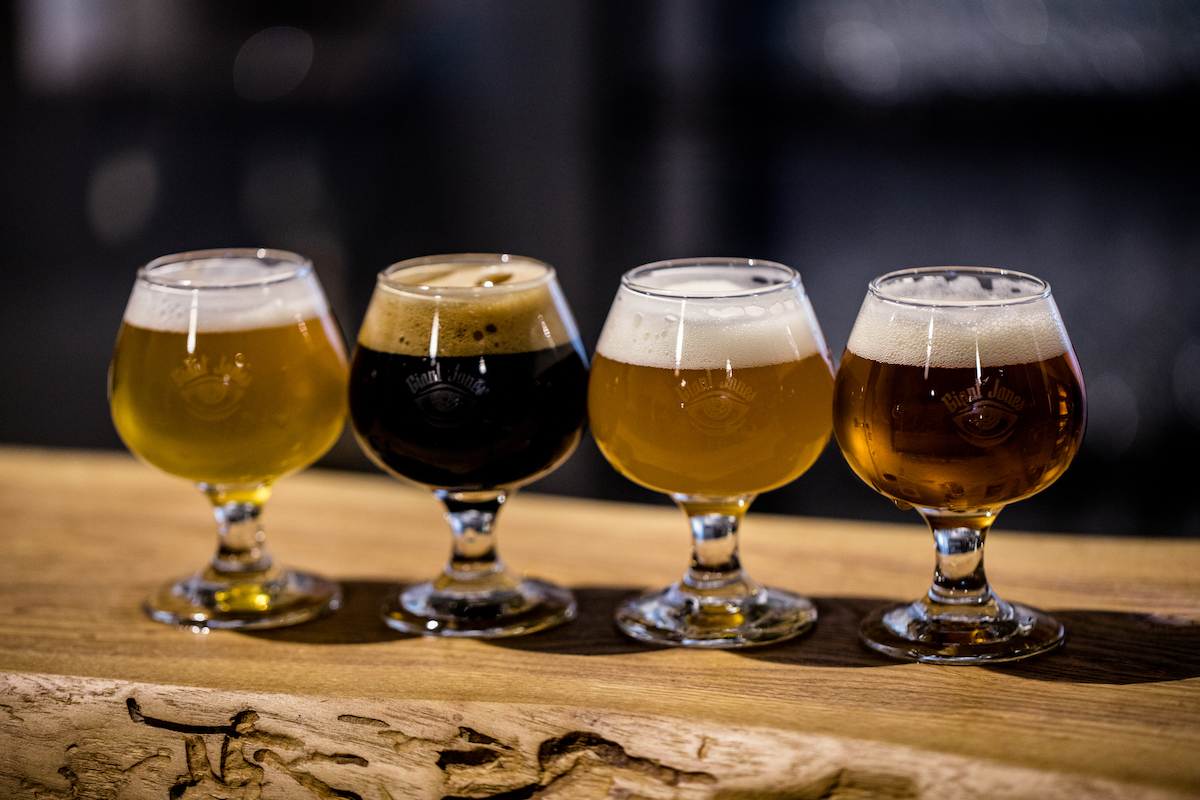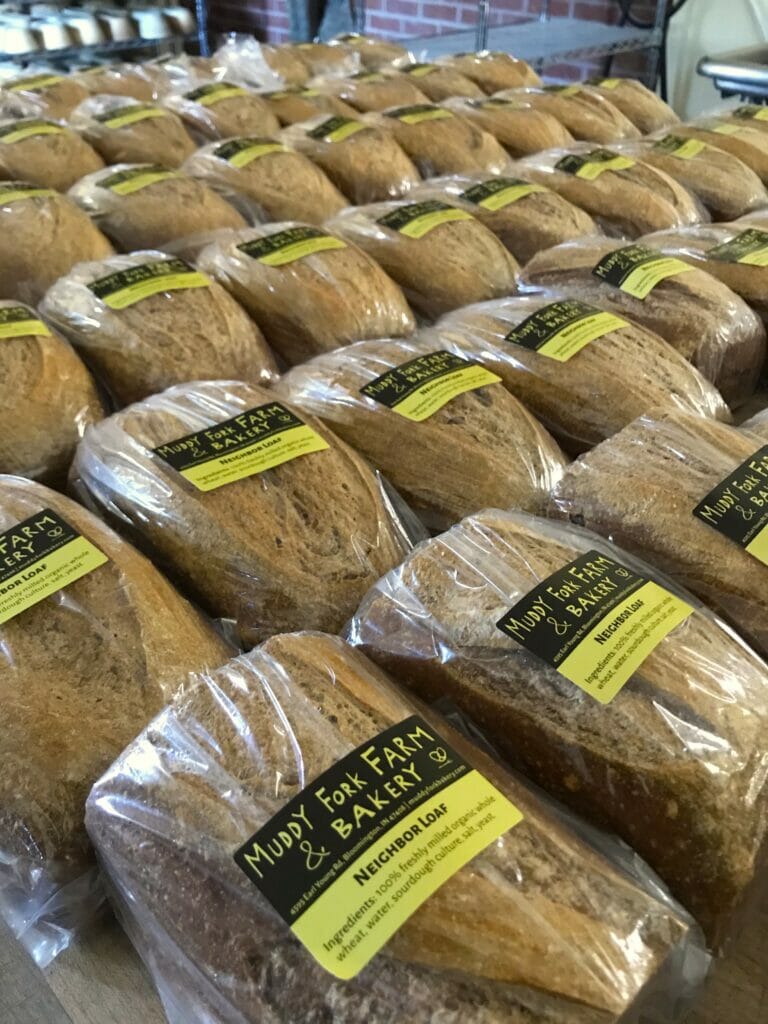Meet the Midwestern Bakers and Farmers Working to Rebuild a Local Grainshed

[ad_1]
Buckwheat chocolate croissants at Publican High quality Bread, loaves of sunflower rye and limpa bread at Misplaced Larson, sourdough muffins, cookies and seeded sourdough breads at Floriole and pie crusts and biscuits at Baker Miller are only a few scrumptious examples of domestically grown and stone milled grains now prevalent in Chicago.
These pioneering bakers, who believed within the high quality and integrity of native grain and domestically milled flour, had been founding members of what has grow to be the Artisan Grain Collaborative (ACG). The community of 180 farmers, millers, maltsters, bakers, cooks, meals producers, brewers, distillers and researchers throughout the Higher Midwest are devoted to constructing a various regional grain shed constructed on regenerative agriculture practices. The most important focus of members is situated in Illinois, Minnesota, Michigan and Wisconsin. There are additionally members in Iowa, Ohio, Indiana and Missouri.
Grain eaten within the Midwest comes from in all places: Some is grown domestically within the Nice Plains, some is from western states and loads of it comes from Canada and Europe. AGC was created to resolve two interconnected challenges: the dominance of corn and soy agriculture within the Midwest and restricted choices out there for diversifying these rotations; and the absence of domestically grown and milled flours geared towards artisan bread manufacturing. Rising grains for meals domestically provides farmers alternatives to diversify their crop rotations, which brings about all kinds of soil, biodiversity and water high quality advantages. Plus, having a neighborhood supply for grains gives massive financial alternatives for the area in each rural and concrete communities, and it offers larger resilience in occasions of nationwide or international provide chain disruptions.

Einkorn, spelt, and winter wheat within the area at AGC member Meadowlark Organics in Ridgeway, WI.
“We felt keen about supporting the native grain economic system, however [we] felt like our prospects and the trade as a complete didn’t perceive it and didn’t need to undertake it as a result of it value an excessive amount of or as a result of the standard of the grain was too inconsistent for industrial software,” says Baker Miller’s Dave Miller in regards to the genesis of AGC in 2016. It began organically as a dialog between passionate bakers and companions akin to Contemporary Style, Delta Institute and Kendall School.
Govt director Alyssa Hartman joined AGC in 2019 as the primary full-time employees member. Since then, the group has greater than quintupled. “Once I began, there have been only a few farmers engaged within the community,” she says. “Bakers and finish customers needed to drag the farmers alongside. That paradigm inside our group has actually flipped on its head. The farmers in a variety of methods are those which are driving the ship now. That’s actually vital—that the individuals rising the meals are main and telling the remainder of the group what it’s that they want.”
The group is comprised of 5 member-led working teams: schooling and outreach; analysis and selection testing; farmer collaboration; brewing and distilling; and institutional procurement. “We’ve real illustration from all totally different elements of the grain manufacturing system,” says Hartman. “We’ve all of the individuals within the room—together with the maltsters and millers—and it truly is a stakeholder-led initiative”

Tasting glasses of licensed natural beer from Madison, WI AGC member Large Jones Brewing Firm.
Lower than half of the farms in AGC’s community are licensed USDA natural, however they’re working straight with millers, bakers, cooks, brewers and distillers and have relationships the place they’ll speak to prospects about their rising practices.
For instance, Luke Peterson at A-Body Farms in Madison, Minnesota has a nine- to 12-year crop rotation—for much longer than most Midwestern farms—that features alfalfa, sunflowers, flax, barley, buckwheat, corn and spring and winter wheat. “Having shoppers and patrons educated on different crops is actually vital as a result of, with out having a marketplace for these, it’s not attainable for farmers to develop them,” he says. “Range is essential to [keeping] a wholesome ecosystem functioning correctly.”
For Claire Smith, a farmer, grain processor and meals producer of teff granola at Teffola, becoming a member of AGC inspired her to take sustainable practices even additional. “Our farm was already training regenerative agriculture after we joined AGC, however now we’re going a bit deeper,” she says. “For instance, we assist cease soil erosion close to water sources utilizing a sod program, and we’re evaluating whether or not prairie stripping with perennial grasses and wildflowers is likely to be choice for us after I discovered about prairie stripping at an AGC-organized occasion.”
Even in the course of the pandemic, AGC has continued to develop, spurred by profitable initiatives akin to Neighbor Loaves, which offers freshly baked bread made with domestically grown stone milled flour to native meals pantries. Customers should buy these loaves at their native bakeries to feed neighbors in want.
Since launching in March 2020, Neighbor Loaves has distributed extra 30,000 loaves to communities in want.

reshly baked Neighbor Loaves packaged and able to head to Mom Hubbard’s Cabinet meals pantry in Bloomington, IN. AGC member Muddy Fork Farm & Bakery has been baking Neighbor Loaves made with licensed natural grain from Janie’s Farm in Ashkum, IL since 2020.
Over the following few years, AGC goals to have interaction extra on coverage points and construct visibility amongst shoppers for diversified grain methods. For instance, a latest invoice signed in Michigan incentivizes craft distilleries to make use of extra Michigan-grown grains of their mash invoice and, in flip, helps Michigan grain farmers. One other major objective is to speed up the expansion of regional provide chains and accumulate knowledge on the state of regional grains within the Midwest, which shall be shared brazenly amongst members to facilitate collaboration.
“The connections and networking have been extraordinarily helpful for us as we develop our specialty grains cleansing and processing enterprise,” says Smith. “We’re trying to stabilize our farm income by offering a service for farmers who must be gluten free. With the ability to speak with different farmers and processors about what has labored for them or assets they’ve tapped into has been useful, particularly since that is our first enterprise into meals grade grains.”
As anybody working in agriculture and meals coverage is aware of, it could take months and even years to enact massive modifications—but it surely’s important labor. “We’re working to create a community-based different to a commodity system,” says Hartman. “We need to foster a system the place extra of our grain-based meals {dollars} are going into the pockets of farmers and makers, the place extra of our panorama is producing meals that fosters larger regional resilience in a altering local weather and the place we prioritize ecology and other people over simplicity and enterprise as traditional.”
[ad_2]



